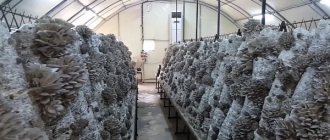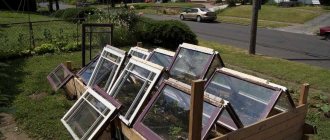Preparing for winter
Leaving everything in the greenhouse as is and waiting for heat will not work. Such mismanagement will lead to contamination of the greenhouse with bacteria, which, having successfully overwintered, attack the planted plants. And you can no longer expect a good harvest. All work to prepare for winter must be carried out before frost.
Why do you need to prepare for winter?
It is with the protection of the plant home from the appearance of harmful organisms that the preparation of the greenhouse is associated. It is necessary to remove all remaining plants, tidy up the soil, thoroughly disinfecting every centimeter. You also need to check the walls and roof and treat them against pathogenic bacteria. Moreover, you need not to miss a single nook, not a single depression, so that pests do not manifest themselves in the spring.
Much attention should be paid to strengthening the greenhouse itself so that wintering does not become its last. Ventilate well after disinfection, and then strengthen the walls and frame - mandatory work.
When to cover grapes for the winter
Pros and cons of polycarbonate greenhouses
A polycarbonate greenhouse is quite popular; gardeners are happy to install these on their plots. The polycarbonate greenhouse is large in size, so you can stand upright in it. It is spacious and you can plant a lot of plants in the area. In such a house for seedlings it is easy to install a heating system, which may be needed under unfavorable natural conditions. In good weather, hot air is generated in the greenhouse, which is necessary for the growth and development of plants.
Another undoubted advantage of polycarbonate is its elasticity, which makes it easy to attach the covering to any roof shape. It is worth noting the strength of the material: it is not afraid of minor damage and temperature changes. The durability of polycarbonate is decent - up to twelve years with proper use.
Polycarbonate also has disadvantages. There are no one-piece greenhouses made of polycarbonate; each consists of separate sheets fastened together. Therefore, if any holes are overlooked, water will begin to get inside. This is dangerous - freezing is possible during frosts. As a result, the material will become brittle and unsuitable for further use.
A significant drawback is the inability to pollinate plants. Plants that are planted in an open area do not have this problem. It is preferable to grow self-pollinating varieties in a polycarbonate greenhouse. The color of the material is also of great importance. Thus, polycarbonate painted in a dark color does not allow sunlight to penetrate, which negatively affects photosynthesis.
How to prepare fruit trees for winter
Although autumn is coming, greenhouse owners do not have to worry about rising prices for vegetable products - with proper care, even in an unheated greenhouse you can get a good harvest. Of course, for this you will have to work hard, and most importantly - to correctly and timely apply the most modern methods of fertilizing plants and treating them with effective preparations. Experienced gardeners claim that even in summers that are not the most favorable in terms of weather conditions, throughout the season from 10 sq. m of greenhouses you can get about one and a half centners of cucumbers. The yield indicator is also influenced by the conditions of the climatic zone in which the vegetables are grown.
Content
- Growing cucumbers in a greenhouse in the fall video
- Greenhouse in the fall - what work should be done before the onset of cold weather
- How to properly clean greenhouses after harvesting the last harvest
- Soil disinfection video
- Digging up the soil
- Caring for a greenhouse with a removable cover
- How to strengthen a greenhouse frame
- How to prepare a tomato greenhouse for wintering video
Growing cucumbers in a greenhouse in autumn
A very important point in the successful cultivation of cucumbers is the timely application of complete organic and mineral fertilizers. But even with proper care, at the end of August there may be a deterioration in the growth of leaves and a massive appearance of spots on them. Therefore, plants should definitely be sprayed with Epin, and the root system should be fed with slurry with the addition of urea.
After some time, the plants recover and resume fruiting. Rational care of cucumbers in a greenhouse in the fall consists of the following steps:
- adding fresh soil in the area of the root system to prevent exposure of the roots,
- piercing the soil with a pitchfork - to ensure active air flow to the roots of the plant,
- since the central shoot has already worked in the summer, it can be unloaded from leaves.
This will stimulate the development of side shoots and increase the number of ovaries on them. The tip of the central shoot will begin to develop more actively.
If we talk about varieties that can bear fruit until late autumn, then we should remember the hybrids Valentina, Vernissage, Opla, Druzhok, Severny. If necessary, you can keep sweet peppers in the greenhouse along with cucumbers in the autumn.
Fruiting of cucumbers in an unheated greenhouse in the fall usually continues until the end of September - beginning of October. In addition to cucumbers, in a greenhouse in the fall you can get a good harvest of parsley, dill, and lettuce - these plants develop well at moderate temperatures, provided the soil is sufficiently moist.
Greenhouse in the fall - what work should be done before the onset of cold weather
Harvesting the last harvest and removing plant remains from the greenhouse does not mean that the owners can indulge in relaxation. It is during this period that you will need to do a little more work and properly prepare the greenhouse for wintering and for the next season. If you approach the issue of preparation correctly, then by next spring you can get nutrient-rich, soft and loose soil, sufficiently moistened and saturated with oxygen. Even if the plants were not sick, the greenhouse will still need to be treated in the fall - this will rid the soil of fungal viruses and various types of pests. Also, due to the coming winter, it will be necessary to install additional supports on the frame.
How to properly clean greenhouses after harvesting the last harvest
The very first thing you need to do is remove all remnants of plants and their roots; it is also recommended to remove the top layer of soil - from 5 to 7 cm and take it outside. You should not ignore harmful insects and their larvae, which can damage the seedlings next spring. For example, to get rid of the mole cricket, it will be enough to dig the beds deeply. Getting rid of cockchafer larvae will be much more difficult - they can only be destroyed physically. To do this, you will need to dig up and sift the soil in the greenhouse. Even severe frost will not kill wireworm larvae, and they are not afraid of digging up soil. Before frost sets in, you should also clean the walls of the greenhouse from dust and dirt accumulated over the summer. Next, you can start cultivating the soil.
Soil disinfection
It is in the fall that it is desirable to get rid of the pathogens of fungal and viral diseases accumulated in the soil and in the wooden structures of the building. Fumigating a greenhouse with sulfur is considered a very effective procedure. To do this, you will need 100 grams of sulfur or smoke sulfur bombs weighing 60 grams per square meter. Sulfur or checkers are placed on metal sheets inside the greenhouse and set on fire. To protect yourself from harmful fumes, you should work in a gas mask and follow all rules for handling flammable materials.
The greenhouse with the smoking bombs is left tightly closed for 1 hour.
To enhance the efficiency of fumigation, the surface of the walls of the greenhouse and the racks located in it are well moistened. After finishing the treatment, the greenhouse is opened for ventilation.
All glass surfaces are washed with water with the addition of pemoxol (1 - 2% solution). The easiest way to apply the solution is with a sprayer, then wipe the surface with nylon brushes and wash it clean with water from a hose. Disinfection of a polycarbonate greenhouse in the fall is carried out similarly to a glass one. Some gardeners very successfully use this same method to treat their cellars.
Digging up the soil
Next, you can start digging up the soil, then evenly cover the entire surface of the soil with a layer of humus and peat for every square meter. Half a bucket of organic fertilizer should be added. Based on 1 sq. m is added in a liter jar of river sand and ash.
The surface of the soil is covered with straw, and with the onset of winter, snow is brought into the greenhouse. It will prevent the soil from freezing, and with the onset of winter it will saturate it with melt water.
Caring for a greenhouse with a removable cover
If the greenhouse cover is removable, made of plastic film, then you will initially need to wash the film and dry it thoroughly. Only then carefully remove the film. It is advisable to remove the polyethylene covering from greenhouses for the winter - even its durable types cannot withstand low temperatures and quickly collapse.
After this, the frame of the structure is treated with a bleach solution. The solution is prepared at the rate of 400 grams of lime per 10 liters of water. Infuse the lime for 4 hours, stirring occasionally. The liquid that settles on top is used to spray the soil; the structural material is treated with the sedimentary mixture using a brush. All equipment used in the greenhouse should also be treated with a bleach solution. A wooden structure can be treated with a mixture of freshly slaked lime and copper sulfate. Treated surfaces will retain their color for a long time; after such treatment, the greenhouse becomes clean and bright.
To process high-quality galvanized steel, you do not need special tools - you can use the same lime mortar. If the structure contains non-galvanized fittings (door hinges, handles, latches), they are covered with a layer of paint.
If the greenhouse is built from painted or unpainted material of a different origin, then it will not be possible to do without treatment with special means and painting. Otherwise, the structure will be slowly destroyed by corrosion processes.
All cups for growing seedlings, boxes, and other containers must be doused with boiling water.
How to strengthen a greenhouse frame
If the construction of the greenhouse was done with your own hands, often without special engineering calculations of strength, then you can quite reasonably fear damage to it from snow accumulating on the roof. However, a large accumulation of snow masses on the roofs of purchased super durable greenhouses can have negative consequences. One should not hope that practically weightless snowflakes will not be able to damage a durable structure - even the double structure of the so-called “Kremlin” greenhouse, which can easily support the weight of several people, can also be destroyed. During heavy precipitation, such an amount of snow accumulates that its pressure can reach critical figures exceeding a ton per square meter. m. If these indicators are compared with the figures indicated in the passport of the purchased greenhouse, then the cause of the destruction is easy to understand - the bearing capacity of their structures reaches from 200 to 500 kg/sq.m.
Therefore, strengthening the greenhouse with additional supports will not be superfluous even in the event of a not very snowy winter. You can use additional arcs; sometimes they are offered to be purchased along with the greenhouse. You can also use wooden supports in a "T" shape. You can make them yourself. They are able to create sufficient support for the ridge of the greenhouse.
It is important to remember that a greenhouse of any strength can withstand a load created by a maximum of 70 cm of fluffy snow or 30 cm of compacted or wet snow.
Calculating the required number of supports is not difficult: for a six-meter greenhouse you will need at least 3-4 of them. If the greenhouse is located in such a way that there is a risk of creating snow caps, for example, near a high fence or in a leeward place, then twice as many supports will be required.
To prevent the supports from sinking into the ground and falling, they are attached to the top crossbar of the greenhouse structure, and a solid support is placed under their lower end, for example, scraps of a wide wooden board.
How to prepare a tomato greenhouse for wintering
If the greenhouse is intended exclusively for growing tomatoes, then autumn work is carried out according to the following scheme:
- After the last harvest, all stems and roots are removed and dried, then burned. Tops damaged by rot or mold cannot be used.
- The ash is collected in a container and stored - it will be needed for fertilizer and pest control.
- Next, the soil is treated with a solution of iron sulfate: take 250 grams of sulfate per bucket of water.
The soil is dug up in a special way: they dig a row, put dry leaves or grass into the resulting groove, and sprinkle it with soil from the next row. With the onset of sunny spring days, moistened waste will begin to rot and generate heat. This fact will help optimize the temperature in the greenhouse; the tomato roots will receive sufficient heating to actively stimulate the growth and development of seedlings.
Be sure to remove all grass around the greenhouses - aphids or whiteflies can establish their wintering grounds on it.
Having processed the greenhouse in the fall and properly prepared it for wintering, you can safely expect the onset of frost and snowfall. Next year the greenhouse will definitely delight you with a bountiful harvest of vegetables.
Author: Sergey and Svetlana Khudentsov
10
spring-cleaning
In the fall, the greenhouse needs to be thoroughly cleaned. All plants are uprooted and removed. It doesn't matter if the plants are annuals or perennials basking in the warm, humid greenhouse climate. They cannot be left over the winter. They can become a source of diseases for new plants. Annuals should be pulled out and disposed of. Diseased leaves of perennials are removed, then the plants are dug up by the roots. In the spring, new young specimens are planted.
After the plants are removed, the greenhouse needs to be washed. To avoid leaving scratches on the covering material, you need to use a soft cloth. A sponge will also do. Dirt is washed off with a soapy water solution. Then everything needs to be rinsed with clean water. After arranging ventilation, dry the greenhouse.
How to treat diseases and pests
To ensure that no pathogenic bacteria remain in the greenhouse, it must be treated from the inside. The soil must be disinfected with humic acids, and the greenhouse itself must be treated with urea. To do this, you need to prepare a solution by combining urea with water. A quarter glass of urea contains up to 10 liters of water. You can water only when the urea is completely dissolved in water. Moreover, water not only the ridges, but also the aisles.
The inside of the greenhouse is also fumigated with sulfur. This sulfuric smoke allows it to penetrate into every crevice, leaving no chance for pests. Sulfur can also be fumigated outside. However, if the greenhouse has a metal frame, fumigation with sulfur is prohibited, as it will disrupt the structure of the metal. Sulfur smoke is prepared as follows: add sulfur to kerosene and set it on fire. You can just take a sulfur bomb. The procedure lasts up to two days - when fumigated with smoke obtained from kerosene with sulfur. If fumigation is carried out using a sulfur bomb, then a quarter of a day is enough.
For disinfection, the frame can be treated with a solution of vinegar and water, using boiling water.
The polycarbonate greenhouse itself must be disinfected using a hot and saturated solution of potassium permanganate. The greenhouse is washed both inside and outside. Then it needs to be left for airing.
How to treat currants in the fall against pests and diseases
Autumn processing of beds
Preparing the soil for wintering is labor-intensive work. In autumn it is necessary to remove the top layer of soil. Minus fifteen centimeters - no more and no less. This soil should be dumped onto ridges in the garden plot where plants grow in the open air. Can be placed under trees. However, before disposing of the top layer of soil from the greenhouse, it must be freed from possible bacteria.
A new one is placed in place of the removed top layer. This can be fertile land purchased at the market, or prepared independently.
Soil disinfection
Aphids, nematodes, spider mites and other pests can occupy the greenhouse, and the harvest can be forgotten. In addition, greenhouse plants can suffer from fungal diseases: late blight, powdery mildew and others. To get rid of bacterial and other diseases, you need to use antibacterial drugs. These can be ready-made anti-pest compounds, for example, Fufanon. “Thunderstorm” will help against slugs. "Muracid" will save you from the invasion of ants. There are other drugs. The main rule is that you must strictly follow the instructions.
To till the soil, complex tillage can be carried out. Every gardener has copper sulfate and bleach, as well as Bordeaux mixture. All these compounds are used only after general cleaning has been carried out, the greenhouse has been washed and dried. The best time for such disinfection is immediately before preservation.
How to get rid of aphids in the garden forever
Why treat a greenhouse in the fall?
After harvesting, it's time to start autumn activities inside a polycarbonate structure, for which there are several reasons.
The importance of autumn greenhouse cleaning
During the growing season, in conditions of high temperature and humidity, many problems accumulate in greenhouses that must be solved in preparing the best conditions for the next season. First of all, this concerns the sanitary treatment of the premises, which consists of thoroughly disinfecting the structures of the greenhouse itself and all tools and equipment located inside or brought from outside.
Disinfection of a polycarbonate structure is dictated by the need to destroy pathogenic crops accumulated in the greenhouse during the season in the form of:
- pathogens of infectious plant diseases;
- mold and fungal spores;
- pathogenic bacteria.
For example, late blight spores remaining after tomatoes in a greenhouse can retain their harmful viability for up to 5 years. If you do not disinfect the room itself and the soil in it, the future harvest of tomatoes may be in danger, as well as other berries and vegetables. Therefore, late blight with the help of “Fitosporin” and other diseases and pests using other means should be gotten rid of in advance, and not during the growing season. In addition, preparing a greenhouse for winter also includes cleaning the greenhouse structure from dust, dirt, rust and painting its parts that are prone to corrosion and rotting.
The need for seasonal soil preparation
In the process of cultivating plants, especially when crop rotation rules are ignored, toxins and pathogenic crops accumulate in the soil, and autumn digging and soil disinfection help get rid of them.
Did you know? Greenhouses first appeared in ancient Rome.
These were heated rooms covered with mica. They act as effective preventive measures against damage to the future harvest by the already mentioned late blight, as well as:
- fusarium;
- top rot;
- brown spotting;
- whitefly;
- thrips;
- aphids;
- mealybug;
- spider mite.
Laying new soil
The fertile soil layer must meet the following requirements. The soil must have the required structure and moisture capacity. This means that there should be no dust or large stones in it. The structure of the soil should be such that moisture is well retained in the ground, no matter what the temperature in the greenhouse. The soil should contain peat, river sand and compost. This is the ideal composition of fertile land that can produce high yields. Good soil allows you to do without frequent loosening.
The fertile layer must have high nutritional value. If the nutritional value is weak, the plants will not be able to gain strength. There should be no mineral salts in the soil, since tender young seedlings are not able to assimilate such “heavy food”. The soil must have a neutral background, which means that alkali and acidic salts must be present in equal quantities. Also, the fertile layer of soil must be thoroughly disinfected. To do this you need to use humic acids. The drug "Ftorine-S" will help solve the issue of disinfection.
After the new soil has been laid, it is covered with straw on top. This layer should be at least 5 cm. After a while, when snow falls, it must be placed on straw. This way you can create protection for the ground from freezing. In the spring, when the snow begins to melt, the soil will be fed with melt water. This will help the soil acquire the necessary moisture.
How to treat a greenhouse in the fall after harvesting
Useful tips
You cannot use compost on the plants from which it came.
The soil that was removed in the greenhouse must be placed at the edge of the site and processed. The layer should not exceed 20 cm; it is sprinkled with bleach at the rate of 250 grams per square meter. In this state it overwinters and freezes. In the summer, this soil is dug up and again left to freeze throughout the winter . In the spring, if you need to fill up the beds in the greenhouse, this soil will be completely ready and disinfected. It can be used without any worries.
Do not forget that if you have a greenhouse with a metal frame, then fumigation using sulfur is contraindicated in it, since sulfuric anhydrite released when sulfur burns is very harmful to metal products.
Another tip for beginners. In winter, when there is a lot of snow outside, take the trouble to transfer it in large quantities to the dormant greenhouse beds. Snow will prevent the soil from freezing, and in the spring, when it melts, it will saturate the soil with moisture and nutrients.
Strengthening the frame
Gardeners often receive an unpleasant surprise in the spring - the greenhouse is tilted from the weight of the snow. This is no longer suitable for growing plants. Therefore, in the fall it must be prepared for wintering.
Supports will come to the rescue with which you need to tuck the roof. The more supports, the better. If the greenhouse is located in an area where the wind blows, it should have many supporting devices. These devices should not be on the ground, as under the weight they will sink into the soil “knee-deep”, so there will be no benefit from them. Supports are placed on a hard surface - boards, metal sheets.
When preparing supports, you need to take into account that the polycarbonate coating can withstand a layer of snow up to 70 cm. A layer of 80 cm already becomes critical. A 40-centimeter layer of compacted wet snow will also be dangerous for polycarbonate. Therefore, the area where the greenhouses are installed must be regularly inspected in winter and snow removed from the surface.
Cleaning up plant residues in a greenhouse
Plant debris (leaves, tops, rhizomes) and mulch may contain pathogens of dangerous diseases. The first step in cleaning a greenhouse is to remove absolutely all plant debris from it after harvesting . These include any parts of plants (tomatoes, cucumbers, cabbage, eggplants, bell peppers, etc.) that were grown in it, weeds. In this case, they must be removed along with the rhizome .
In addition, you need to remove all the mulch!
Advice! Parts of plants and mulch should not be taken to the compost heap or to another part of the garden. It's better to burn them right away!
Reviews
I usually have glass greenhouses on my property, but it’s hot in them in the summer - I don’t have the strength, and the leaves were fried under the sun, as if they were burning under a magnifying glass. Polycarbonate is probably better. I read about the quality and decided that I should buy it.
Vladimir, Ulyanovsk
I always remove old plants in the fall. I would like to give gardeners advice: never throw old tops into the compost. This is how you can get infected! Suddenly there are pests in the tops...
Olga, Vologda
What kind of supports are best? Wooden, or what? So, probably, their top should be wider than their bottom. Otherwise they won't be able to withstand the snow.
Nikita, Ekaterinburg
I always use store-bought soil. It’s very convenient, it’s already completely ready. Just plant!
Alina, Krasnoufimsk
Is it possible to do without a sulfur bomb? It's probably enough to just rinse with potassium permanganate. All the pests will die from the cold anyway...
Evgeniya, Petushki
My grandfather also used sulfur smoke, and my father and I follow their advice. It seems to me that this is the surest remedy.
Andrey, Krasnoufimsk
Autumn chores and work in the greenhouse will be worth it. If you keep it in good condition, it will last for many years. The main thing is to prepare the house for the plants in time for wintering.
Health to you and your loved ones! Natalya Belokopytova.











